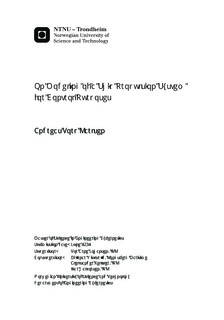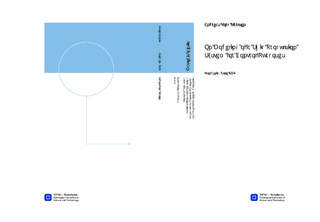| dc.description.abstract | In this thesis a model of a ship propulsion system containing an engine, turbocharger, propeller and ship was constructed. The purpose of the model is to be used in controller design and testing. This is motivated by the fact that testing large marine diesel engines is limited due to large costs and difficulty providing a proper testbed facility.First compressor and turbine models were developed by fitting parameters to manufacturer turbocharger maps. A novel compressor model was made from using exponential functions. The performance of the compressor model surpassed that of a model commonly used in literature. However, to conclude this in the general case, more testing has to be performed. The development of an accurate turbocharger model was stimulated by possibilities of variable area turbine, wastegate and exhaust gas recirculation control. This would again lead to better transient air-to-fuel ratio control, turbocharger speed control and the reduction of pollutants. % extrapolationExtensions were made to an existing mean value engine model developed in an earlier project work by the same author, this included an intercooler and overload protection. The overload protection works through the use of fuel limiters based of torque and scavenging air pressure. In simulations these limiters showed to effectively maintain the air-to-fuel ratio for perfect combustion, however, at an increased engine response time. It was argued that the limiters could be superfluous if appropriate control of the air-to-fuel ratio was achieved. The engine and turbocharger were put to the test in simulations. Despite the lack of turbocharger experimental data in low speed regions, the simulations proved that the turbocharger model could cope with low engine load conditions at reduced turbocharger speed. In fact, results show that the engine and turbocharger models worked excellent in the entire speed region.Furthermore a propeller and ship model was developed. These models were tested in simulations together with a PI engine speed controller. Due to limited fuel actuation an integrator anti-windup scheme had to be included in the controller. The simulations showed that the PI controller was able to follow a slowly changing speed setpoint. However, due to the fact that the model is nonlinear and that no linearization, gain scheduling or excessive parameter tuning was performed, more advanced controller performance was not investigated. Moreover, further research on creating controllers for the purpose of suppressing propeller load torque fluctuations and subsequent engine overspeed is recommended. The total ship propulsion system showed to work in accordance to expected performance. All in all, this thesis provided as an enlightenment of the parameters and principles that are important in control of propulsion plants. Furthermore, it gives a testing environment for control design of various applications. | nb_NO |

